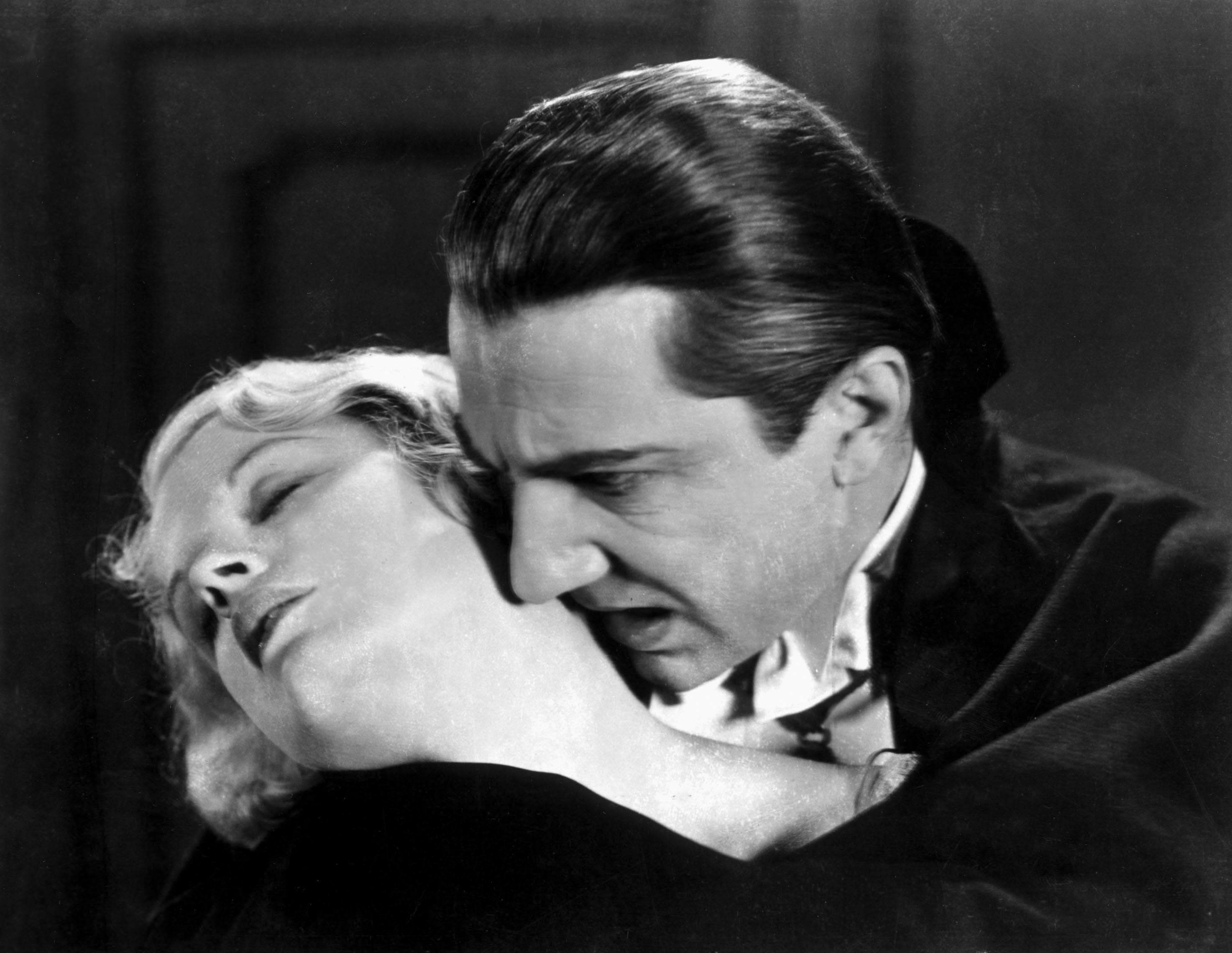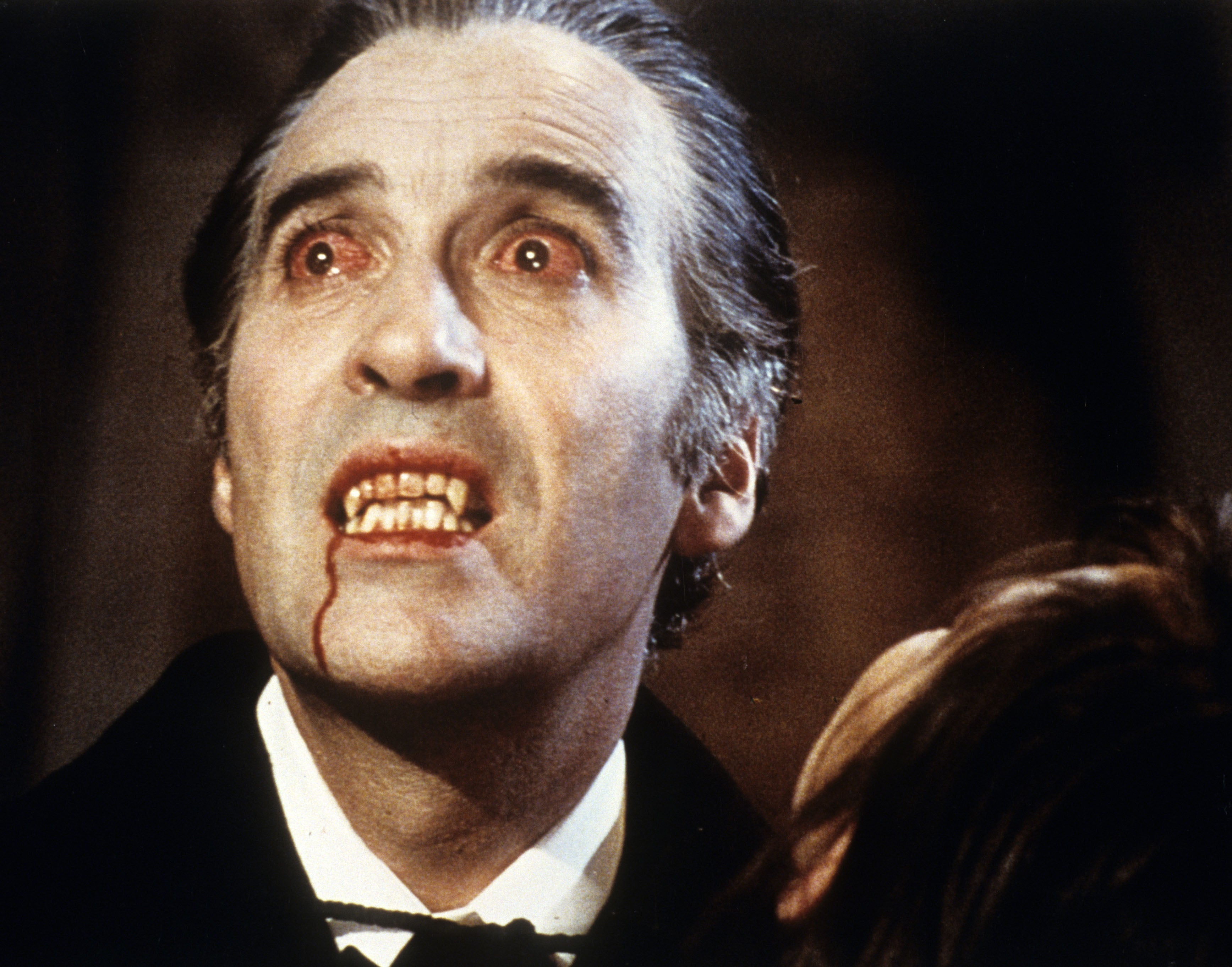Love at first bite: Why there’s a lot at stake in getting Dracula right
As Nicolas Cage plays the vampire in Chris McKay’s new horror-comedy ‘Renfield’ in cinemas this week, Geoffrey Macnab looks back at the long line of actors sinking their teeth into the role and says Cage has got that heady mix of arrogance and insecurity all the best bloodsuckers share

Pale-skinned and cadaverous but with a dash of matinee idol gallantry about him, Nicolas Cage’s Dracula looks to the Transylvanian manor born. Cage plays the timeless vampire anti-hero in Chris McKay’s uproarious new horror-comedy Renfield. You can’t think of many actors better suited for the role. The veteran American A-lister, turned B-movie star combines elegance and feral intensity. His Dracula is very courteous and politely spoken but that doesn’t stop him from gorging on live flesh or indulging in acts of extreme, mind-blowing violence.
The setting is New Orleans in the present day. Dracula has come to town for some rest and recuperation and is hiding out in a disused old hospital in The Big Easy. He’s not so much the prince of darkness as the boss from hell. Nicholas Hoult plays his overworked and oppressed “helper”, RM Renfield, who makes sure the Count has plenty of what he craves most, namely busloads of nubile cheerleaders whose blood he can sup on.
Cage’s Dracula is a jaded narcissist – a lounge lizard who speaks in a husky whisper and expects utter devotion from the hapless, insect-chewing Renfield. The plot throws in drug gangs, police corruption and a doughty traffic cop (Awkwafina) who takes a shine to Renfield.
As the new movie yet again demonstrates, when it comes to cinema, Dracula really is undead. No crucifix, shaft of sunlight, silver bullet, mirror, stake in the heart or string of garlic bulbs can keep him in his coffin for long. On the Internet Movie Database, there are well over 400 films and TV dramas in which he has featured – with several more on the way, among them The Last Voyage of the Demeter, about the doomed ship that carried the vampire to England.
Amid the many conventional adaptations of the 1897 Bram Stoker novel also lurk spoofs, Blaxploitation pictures, cartoons and even one or two porn films. Each new generation reinvents the character. The more he changes, the more he stays the same. He is so familiar that audiences will accept him in just about any location, not just darkest Transylvania.
One of the most memorable early portrayals of the Count was also one of the least characteristic. In FW Murnau’s silent classic, Nosferatu, A Symphony of Horror (1922), the vampire Orlok (the name was chosen because Murnau was making the film on the fly without having secured the rights and so couldn’t call him Dracula) has little romantic appeal. As portrayed by Max Schreck under layers of make-up, he is a grotesque, repulsive, rodent-like figure with sunken eyes, talon-like fingers and huge pointed ears. He represents pestilence and dread. Rats accompany him wherever he goes. His furtive stare gives him a little pathos but he is mainly there to make you squirm.
By contrast, Hungarian actor Bela Lugosi’s Count, first seen on screen in Tod Browning’s Dracula (1931), is a sleek, charming and well-spoken, if still intimidating, figure. His slicked-back, brilliantined hairstyle has been adopted by many of his successors, Cage among them. “I never drink... wine,” the Count tells a guest, making the line seem both funny and chilling. As the audience well knows, his thirst is for a different kind of claret altogether.
Lugosi had already played the vampire successfully on Broadway. He approached the role with a Method-like intensity, working himself up to a “fever pitch” every night in his dressing room before he went on stage. “I was under a veritable spell which I dared not break. If I stepped out of my character for even a moment, the seething menace of the terrible Count Dracula was gone from the characterisation, and my hold on the audience lost its force,” the actor commented in a 1930 interview with the LA Times.
As Arthur Lennig notes in The Immortal Count, his biography of Lugosi, 97 per cent of the actor’s fan mail came from women. “It is women who love horror. Gloat over it. Feed on it. Are nourished by it. Shudder and cling and cry out – and come back for more... it is a biological thing,” Lugosi claimed to one journalist. The Hungarian had turned Dracula into a sex symbol – and that is what he has remained ever since.

Of course, vampires had existed in romantic fiction long before Bram Stoker wrote his novel – or Murnau and Browning adapted it for the screen. “They tended to be fashionably pallid and clean-shaven with seductive voices and pouting lips, and they were always sexually attractive,” author Christopher Frayling notes in his book, Vampyres: Lord Byron to Count Dracula.
Frayling draws attention to a growing class divide in fiction about the bloodsuckers. In folklore, the vampires tended to be rugged and hirsute. They would hurl themselves at their victims’ chests and smother as well as suck them rather than peck at their necks. By the early 19th century, after the publication of John William Polidori’s short story, The Vampyre (1819), they had moved up in society. Polidori had been Lord Byron’s physician. His ghoulish tale, partly inspired by a fragment of a story Byron had written, was set in an aristocratic world.
As all horror fans know, Dracula’s name comes from that of the ruthless 15th century ruler of Wallachia, Vlad the Impaler (aka Vlad Dracula), notorious for the way he tortured and killed his Ottoman enemies. Francis Ford Coppola’s Bram Stoker’s Dracula (1992), starring Gary Oldman, is one of the few adaptations to make explicit reference to Vlad. This was as much an erotic melodrama as a conventional horror film. Oldman’s character famously tells Mina (Winona Ryder) that he has crossed “oceans of time” to be with her.

In the late 1970s, it was telling that John Badham went from working with heartthrob John Travolta in Saturday Night Fever (1977) to directing Frank Langella in his version of Dracula (1979). The publicity photographs showing Langella in an open-necked shirt with a very big collar were remarkably similar to those of Travolta in the earlier movie. The similarities didn’t end there.
Langella was clear about why he played the vampire as a 1970s-style stud. “I decided he [Dracula] was a highly vulnerable and erotic man... he is a threat to women – but a vulnerable threat, which is even more appealing,” he told Photoplay magazine.
At the same time Langella was preening himself, George Hamilton was looking for laughs in the comedy Love at First Bite, also released in 1979. His Dracula is turfed out of his Romanian castle after it is converted into a training camp for young athletes by the communist government. He, therefore, travels to New York with Renfield – cue the predictable puns about taking a bite out of The Big Apple. When he tells fashion model Cindy Sondheim (Susan St James) that he can give her eternal life, she is at first convinced he is just another pushy insurance agent. He wins her over, though, with his slick moves on the dance floor.

A third Dracula movie from 1979, albeit one in a very different register, was German director Werner Herzog’s Nosferatu the Vampyre. This was loosely inspired by the Murnau silent classic. Herzog had recruited the gimlet-eyed Klaus Kinski as the Count. Kinski looks every bit as repulsive as Max Schreck’s Orlok but, as Herzog later told author Paul Cronin, the film sets out to “humanise” Dracula. It presents the vampire as “an agonised, sad and lonely creature, desperately thirsty for love”.
One reason that Dracula endures is that he is so easy to market. Movie distributors relish the chance to come up with puns and garish posters and trailers. In Blacula (1972), he is portrayed by William Marshall as Dracula’s African “soul brother” in search of warm young bodies to feed his hunger. In Clive Donner’s 1974 exploitation picture Vampira (also known as Old Dracula), the Count was played by David Niven as a lecherous English roué who scours copies of Playboy magazine, looking for the models with the prettiest veins. Four Playboy playmates venture off to Castle Dracula, now a tourist destination, for a photo shoot. The Count plans to use their vital bodily fluids to revive his long-dormant bride, Vampira, who has been asleep for 50 years after drinking anaemic blood from a poisoned peasant. The Count revives her but her skin colour changes to black. Given the film’s bizarre racial and sexual politics, it’s not surprising that is rarely revived today – although it is available on YouTube.
Many other actors of different ages, nationalities and appearances have played the Count, among them John Carradine, Jack Palance, Louis Jourdan, Gerard Butler, Jonathan Rhys Meyers, Richard Roxburgh, Thomas Kretschmann, Leslie Nielsen and Claes Bang. Dracula movies run the gamut from the inane comedy of Mel Brooks’s romp Dracula: Dead and Loving It (1995) to the camp and arty decadence of Paul Morrissey’s Blood for Dracula (1974), in which Udo Kier as the Count faces desiccation and death because of a chronic shortage of virgin blood among his potential brides.

The hardest-working Dracula of recent times is clearly Christopher Lee who played the role 10 times in all: seven in Hammer horror films; with Kinski as his Renfield in Jess Franco’s 1970 adaptation; in a cameo opposite Sammy Davis Jr in Jerry Lewis comedy One More Time; and in French comedy-horror picture, Dracula and Son (1976).
Lee, however, dismissed the later films in the Hammer cycle. “It was aesthetically depressing to see the films step by step deteriorate, chiefly because after the verve and dash of their first decade, Hammer became complacent and careless,” he complained. “I was a pantomime figure. Everything was over the top.” Nonetheless, Cage still names Lee as his favourite screen Dracula. It’s easy to understand why. The British actor was “tall, dark and gruesome” as he called himself in his autobiography, a very potent combination.
You can see traces of Lee in Cage’s portrayal. He is the same imposing and immaculate figure. Cage’s Dracula is so concerned about keeping the creases in his cape that he won’t allow Renfield to wash it, instead sending it off to the dry cleaners. Stoker partially based the original character on his old boss, the flamboyant Victorian actor-manager Sir Henry Irving. It is fitting then that Cage’s Dracula also has all the egotism and neurotic idiosyncrasy of an aging thespian, scared that his best roles may be behind him. Cage also claims that he drew on Anne Bancroft as Mrs Robinson in The Graduate to make his Dracula sexy and seductive.

Other screen vampires will be along soon. Cage certainly won’t displace Lugosi or Lee in the canon of screen vampires but he possesses that mix of eccentricity and menace, of arrogance and insecurity, that all the best bloodsuckers share.
This, then, is a case where the line between the actor and the character he is playing very quickly blurs. In one of the film’s strangest scenes, Cage’s Count turns up at Renfield’s therapy group for people in abusive relationships with their partners or bosses. “I am... Dra-cula!” he tells them, uttering the line with such magnificent hamminess that you can’t help but take him at his word.
‘Renfield’ is in cinemas
Join our commenting forum
Join thought-provoking conversations, follow other Independent readers and see their replies
Comments


Bookmark popover
Removed from bookmarks